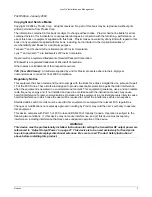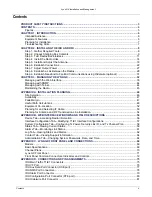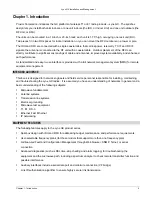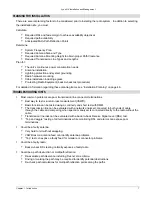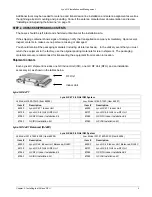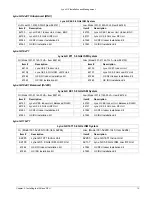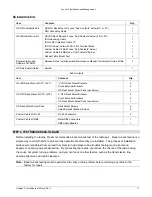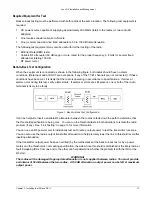
Lynx.GX Installation and Management
Chapter 1. Introduction
Proxim Corporation introduces the GX platform of wireless T1 or E1 radio products—Lynx.GX. The split-box
design lets you install both units indoors, or one unit indoors (the IDU, or Indoor Unit) and one unit outdoors (the
RF Unit, or RFU).
The units can be mounted in a 19-inch or 23-inch rack; each unit is 1.75” high, occupying one rack unit (RU).
Two pieces fit in two RU spaces for indoor installation, or you can mount the RFU outdoors on a tower or pole.
The IDU and RFU are connected with a single coaxial cable that carries power, telemetry, TX IF and RX IF
signals; the antenna is connected to the RF unit with a coaxial cable. Outdoor placement of the RFU can
directly contribute to significant cost savings of cable and antennas, improved system availability, and enhanced
path performance.
A standardized and easy-to-use interface is provided, with a full network management system (NMS) for remote
equipment management.
INTENDED AUDIENCE
This book is designed for network engineers and field service personnel responsible for installing, maintaining,
and troubleshooting the Lynx.GX radios. It is assumed you have an understanding of networks in general and a
basic understanding of the following subjects:
▪
Microwave fundamentals
▪
Antenna systems
▪
Transmission line systems
▪
Electrical grounding
▪
Microwave test equipment
▪
T1, E1, DS-3
▪
Ethernet, Fast Ethernet
▪
IP networking
EQUIPMENT FEATURES
The following features apply to the Lynx.GX product series:
▪
Split-box design with IDU and RFU for addressing budget, maintenance, and performance requirements
▪
User-selectable frequency plans (for those models that support more than one frequency plan)
▪
Full-featured Fault and Configuration Management through Web browser, SNMP, Telnet, or serial
connection
▪
Advanced diagnostics (such as RSL time-strip charting and alarm logging) for troubleshooting the
equipment and the microwave path, including a spectrum analyzer to check remote transmitter function and
possible interference
▪
Auxiliary interfaces include a serial data port and orderwire connection (VF bridge)
▪
Link ID authentication algorithm to ensure highly secure link transmission.
Chapter 1. Introduction
6


